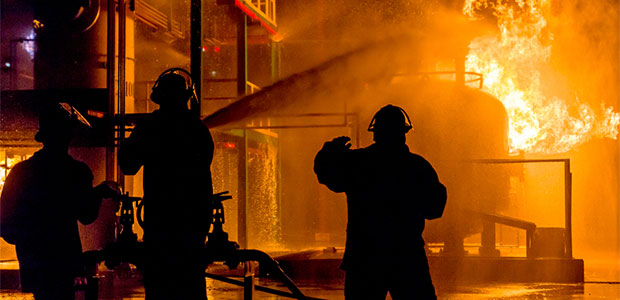
Tiny Particles: Big Booms
The benefits of portable industrial vacuums for combustible dust mitigation.
In a galaxy not so far away (okay, our galaxy), an all-pervading and powerful dark force lurks: dust. It is omnipresent and its potentially disastrous effects are inescapable, even in space.
According to new research from the Laboratory of Atmospheric and Space Physics (LASP) at the University of Colorado Boulder, microscopic hypervelocity dust (from two to 20 microns in size) creates tiny plasma explosions when impacting with NASA’s Parker Solar Probe which can damage the probe and disrupt operations.
While it may be fascinating for scientists to study the effects of plasma explosions in space caused by hypervelocity dust, combustible dust in the plant environment is not as enchanting. Though the mechanism for dust explosions is different in space than it is here on earth, the size of dust particles that can damage the $1.5 billion solar probe, are the same size particles that can cause catastrophic loss of life and property in the manufacturing realm when concentrations exceed safe levels.
Half of all fugitive dusts in manufacturing and processing environments are smaller than 10 microns and invisible to the naked eye which is perhaps why some facilities have misconceptions about the risk at their facility. The culprit behind many secondary dust explosions is the accumulation of dust above eye level such as overhead beams, joists, duct work and the tops of equipment. In addition, catastrophic dust incidents that garner the greatest attention tend to focus on the most egregious offenders with inches deep combustible dust accumulations which may lead some to incorrectly assume that only the most derelict companies experience dust explosions.
According to data from Dust Safety Science there are, on average, three dust explosions and 40 dust fires per month and facilities with combustible dusts should adopt a mindset of “when, not if,” conditions are amplified for a combustible dust incident.
Although the majority of recorded incidents occurred in agricultural, food and wood products industries,2 nearly all industries produce some type of combustible dust during the manufacturing process.
Each combustible dust, or combination of dusts, has unique thresholds for when accumulation levels become hazardous. A general rule of thumb from OSHA and NFPA suggests that a buildup of combustible dust in excess of 1/32 of an inch, more than five percent of a facility’s floor area (including overhead areas such as beams, joists, duct work, walls and the tops of equipment), creates a hazardous condition, with some dusts having even lower thresholds.
This article originally appeared in the February 1, 2022 issue of Occupational Health & Safety.